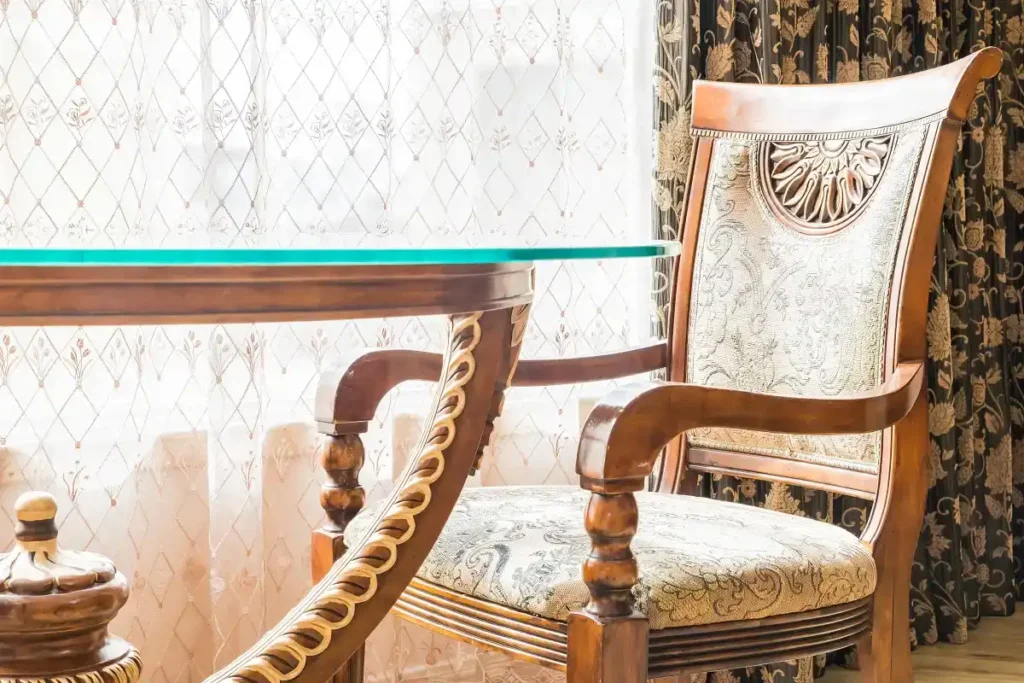When it comes to creating a truly distinctive home or office, furniture is far more than a functional necessity. High-end furniture acts as the backbone of an interior, setting the tone for everything from comfort to style to durability. For homeowners, designers, and business owners alike, investing in luxury custom furniture is one of the most powerful ways to create spaces that feel both personal and extraordinary.
This comprehensive guide explores why luxury furniture stands apart from mass-produced alternatives, how to choose pieces that reflect your taste, and where to find bespoke options that transform interiors into showpieces.
1. What Defines Luxury Furniture?
Luxury furniture is not simply expensive furniture. It embodies craftsmanship, heritage, and exclusivity. Each piece is conceived with attention to detail and built to last for generations rather than years. Hallmarks of high-end furnishings include:
- Exceptional Materials – Premium woods, metals, and fabrics sourced for their beauty and longevity.
- Handcrafted Construction – Joinery, carving, and finishing done by artisans rather than machines.
- Limited Production – Small-batch or one-off creations that maintain exclusivity.
- Design Innovation – Sophisticated silhouettes, thoughtful ergonomics, and timeless aesthetic appeal.
Unlike mass-market furniture, which is designed for cost efficiency, luxury pieces reflect artistry and narrative. They are as much an investment in culture and craftsmanship as they are in comfort.
2. The Benefits of Investing in Custom Furniture
Opting for custom-made pieces instead of off-the-shelf items offers a host of advantages:
- Perfect Fit for Your Space
Custom furniture is tailored to your room’s exact dimensions, ensuring proportional balance and optimal functionality. - Personalized Design
You can choose materials, finishes, fabrics, and detailing that express your style — from sleek modern minimalism to ornate traditional craftsmanship. - Higher Quality & Longevity
Hand-built furniture typically lasts decades longer than mass-produced items, saving money in the long run. - Sustainable Choices
Many bespoke workshops use responsibly sourced or reclaimed materials, reducing environmental impact.
In an era of disposable décor, custom furniture represents a return to intentional living — creating a home that tells your story.
3. Styles of Luxury Furniture
Whether your interior aesthetic leans contemporary, transitional, or classic European, there is a world of styles to explore in the high-end market:
- Modern Minimalist – Clean lines, open silhouettes, and neutral palettes with a focus on texture.
- Art Deco Revival – Glamorous details like lacquered finishes, brass inlays, and bold geometry.
- Old-World European – Intricately carved wood, rich fabrics, and timeless silhouettes inspired by French, Italian, or British tradition.
- Eclectic Fusion – Combining antique elements with modern design for a one-of-a-kind look.
Knowing your style preferences will help you communicate with designers and workshops to achieve a cohesive vision.
4. Key Pieces That Define a Luxury Interior
Some pieces carry more visual weight than others. Focus your investment on items that anchor your rooms:
- Statement Sofas and Sectionals – Large seating defines living spaces and sets a tone of comfort.
- Bespoke Dining Tables – A custom dining table can accommodate your family or clients perfectly while serving as an architectural centerpiece.
- Handcrafted Beds – High-end beds with solid frames and premium upholstery elevate the entire bedroom.
- Designer Storage Solutions – Custom cabinetry and consoles blend beauty with utility.
Well-chosen anchor pieces make it easier to layer in lighting, art, and accessories later on.
5. Sourcing Luxury Custom Furniture
In the United States, especially in California, the market for bespoke furniture is thriving. Clients seeking one-of-a-kind pieces often look for ateliers and showrooms that offer both exceptional craftsmanship and tailored service. One notable resource for handcrafted luxury furniture is Mobilia Cleopatra. Based in Rancho Cucamonga, California, this company specializes in creating high-end, hand-made pieces that blend timeless elegance with contemporary flair. Their collection includes everything from regal dining sets to custom bedroom suites and accent furniture, designed to elevate both residential and commercial interiors.
Working with a company like Mobilia Cleopatra gives homeowners and designers direct access to artisans who can bring a vision to life — from initial sketches to final installation.
6. Tips for Selecting the Right Pieces
Making the most of your investment in custom furniture requires thoughtful planning:
Assess Your Lifestyle
Consider how you actually use each space. For example, a formal living room that sees little traffic can accommodate delicate fabrics, while a family room may call for durable, easy-clean textiles.
Measure Twice
Provide precise measurements and floor plans to your furniture maker. Custom pieces should enhance, not overwhelm, your rooms.
Choose Timeless Over Trendy
While it’s tempting to embrace the latest fad, luxury furniture should outlast fashion cycles. Opt for enduring designs and update accessories instead.
Coordinate With Existing Décor
Think about color palettes, architectural details, and lighting to ensure your new pieces integrate seamlessly.
7. The Role of Artisanship
Artisanship is the soul of luxury furniture. Skilled craftspeople bring decades of expertise to their work, whether carving intricate motifs, hand-applying finishes, or upholstering with precision. Supporting these artisans preserves traditional techniques and ensures your furniture is genuinely unique.
8. Sustainability and Ethical Luxury
Modern consumers increasingly demand ethical production. Many luxury workshops embrace sustainability by:
- Using FSC-certified wood.
- Offering non-toxic finishes and adhesives.
- Minimizing waste through made-to-order production.
- Supporting local economies and small workshops.
Choosing a company with transparent practices adds another layer of value to your purchase.
9. Luxury Furniture for Commercial Spaces
It’s not only private residences that benefit from custom furniture. High-end hotels, executive offices, and upscale retail spaces rely on bespoke furnishings to communicate brand identity. Custom reception desks, boardroom tables, and lounge seating can transform a generic space into an unforgettable experience for clients and guests.
10. Caring for High-End Furniture
Proper care protects your investment:
- Follow the manufacturer’s cleaning instructions for specific materials.
- Avoid placing furniture in direct sunlight or near HVAC vents.
- Rotate cushions and rearrange accessories to distribute wear evenly.
- Refinish or reupholster when needed to refresh the look without replacing the piece.
With care, luxury furniture can become a family heirloom.
11. Future Trends in Luxury Furniture
Looking ahead, several trends are shaping the future of high-end interiors:
- Customization at Scale – Digital modeling allows clients to preview and tweak designs before production.
- Mixed Materials – Combining metal, glass, stone, and wood in bold new ways.
- Smart Integration – Hidden charging ports, motorized features, and modular components.
- Heritage Craft Meets Modern Design – Traditional techniques infused with contemporary aesthetics.
Staying informed about these trends can help you make forward-thinking choices.
Conclusion
Luxury custom furniture represents far more than décor; it’s an investment in quality, sustainability, and personal expression. By working with reputable artisans and showrooms, you can create interiors that feel authentic, functional, and unforgettable.
Whether furnishing a new home, redesigning an office, or curating a boutique hospitality space, consider the value of bespoke pieces crafted to your exact specifications. Companies like Mobilia Cleopatra exemplify the best of this tradition, offering hand-made furniture that merges artistry with durability.



